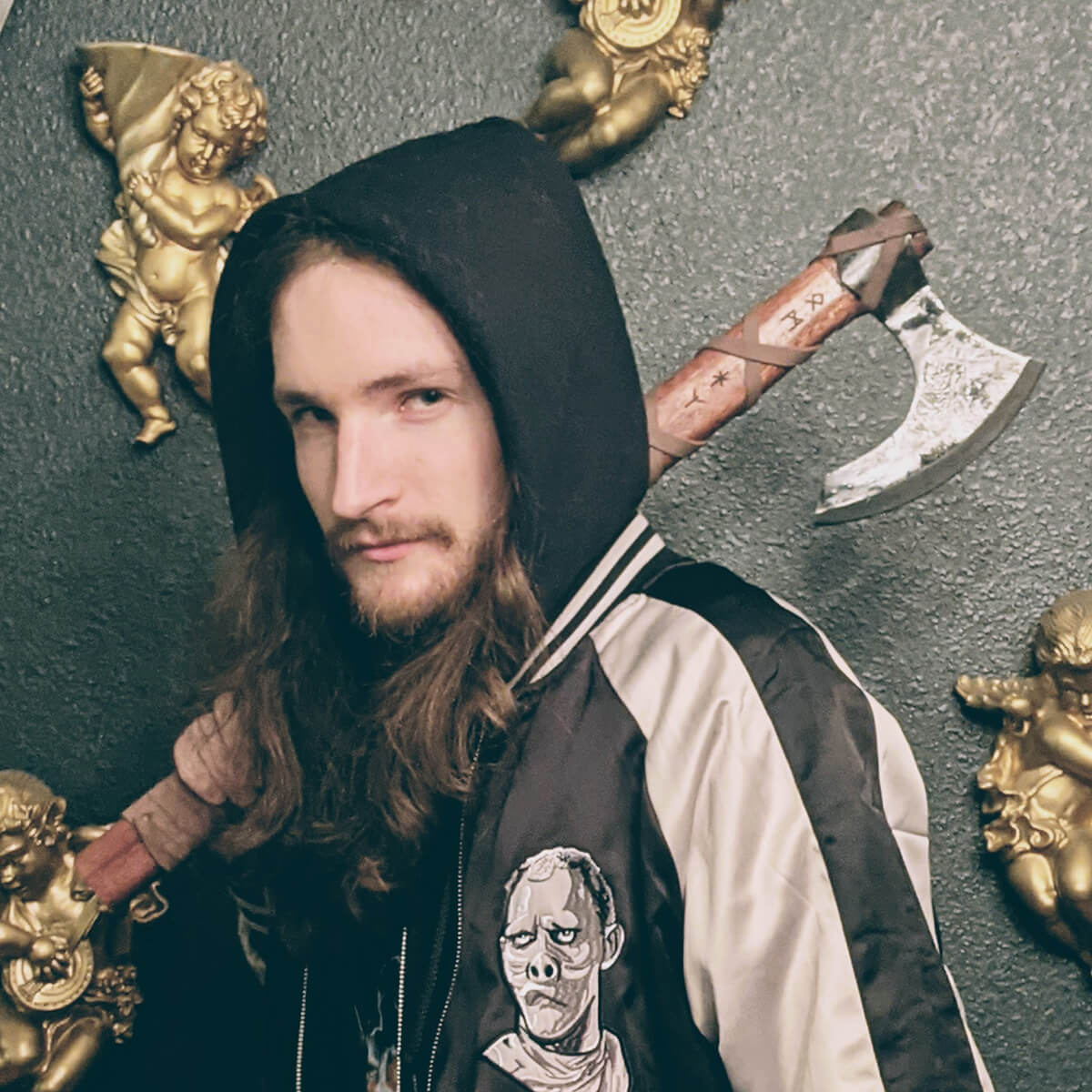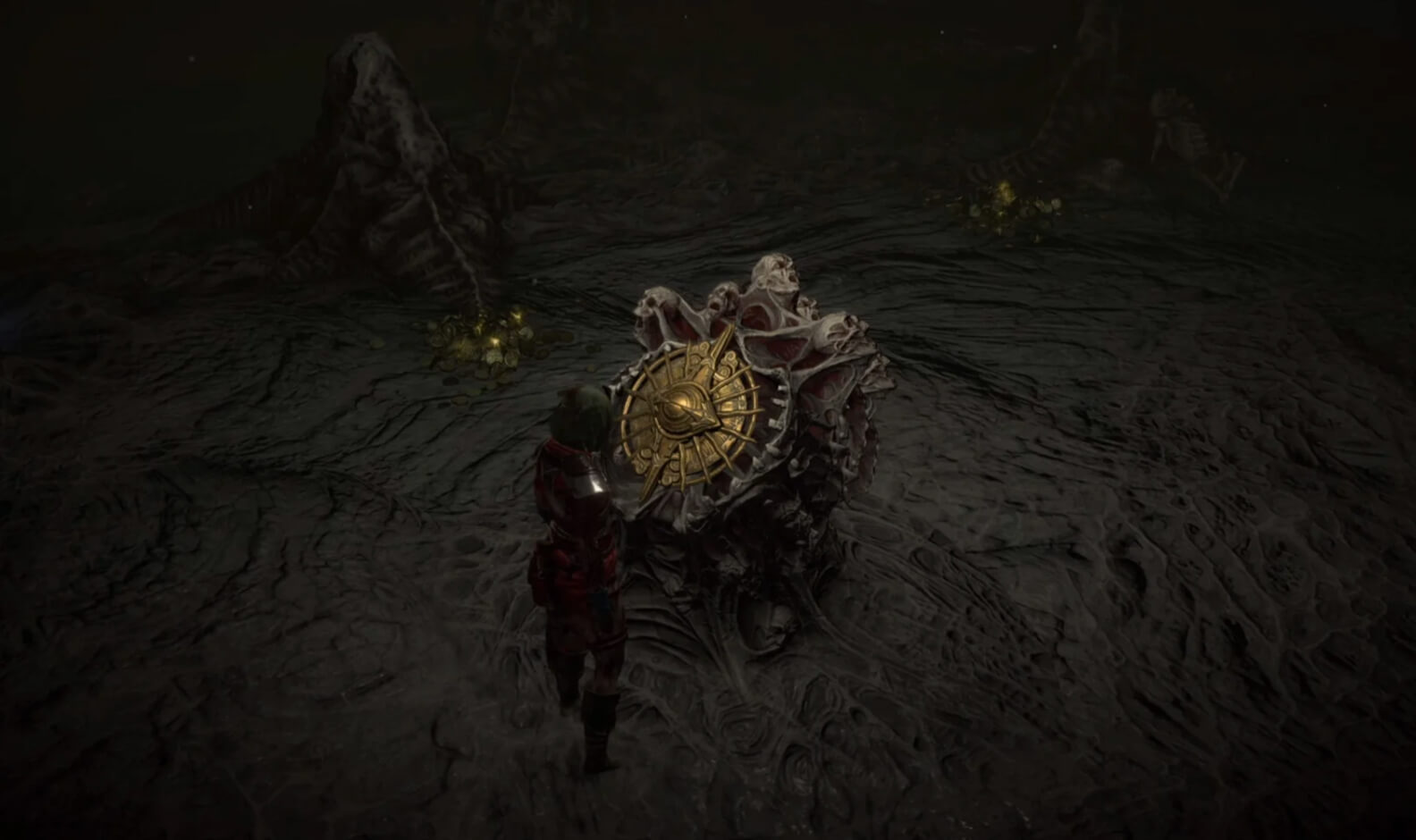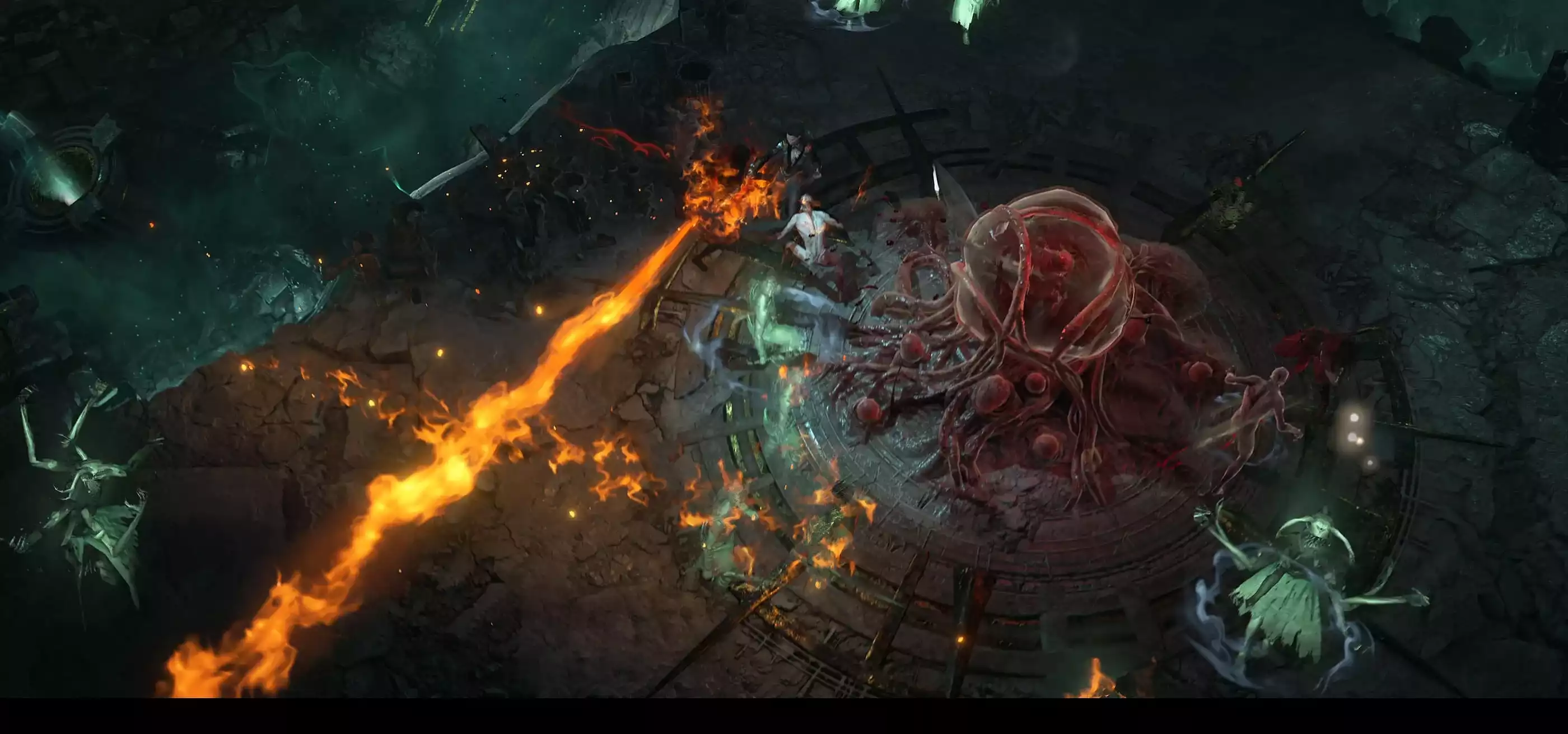Many children grow up dreaming of becoming astronauts, ballerinas, or race car drivers. But even as a toddler, 2015 DigiPen BA in Game Design graduate Devin Brom was ready to be a dungeon designer. That’s because Brom wasn’t like most kids — he started slaying hordes of demons when he was still in a booster seat. “I first played Diablo when I was 3 years old,” Brom says of Blizzard Entertainment’s legendary action RPG series. “Diablo II was the game we played the most and has been most influential for me in terms of the dark gothic tones.

Luckily, Brom didn’t have to go it alone during his youthful adventures purging hellspawn. In fact, he had the best guide and mentor one could possibly hope for, that being his own father, fantasy illustrator Gerald Brom — the man who created the iconic cover art for Diablo II and many of the series’ character designs. “I’m a second-gen Diablo dev,” says Brom, who started his own dev journey at Blizzard on the new Diablo IV in 2020. “Any time you see a helpless villager get slaughtered or some monsters sharing a bloody meal, chances are I am responsible, and I am so sorry.”
As one can imagine, in a series as teeming with dungeons as Diablo, the responsibilities of a Diablo IV dungeon designer are as vast as they are varied. “No two dungeon designers are the same,” Brom says. “While we all share much of the same work, we all have our specialties and passions and are constantly learning from each other. Some of us work more in level design while others focus more on quest and event design.”
Finally we polish it with lore books, monster ambushes, screaming townsfolk, etc.
Brom’s focus was creating the twisted, macabre vignettes players come across in Diablo IV’s dungeons, which spring from a narrative core the team establishes from the beginning of the dungeon design process. “All of our dungeons, even the most minor of dungeons, start with a story. How does this fit into the narrative of the world? What happened here?” Brom says. “From there, we rapidly block out something we can playtest, make changes based on what works or doesn’t work, and then finally we polish it with lore books, monster ambushes, screaming townsfolk, etc.”
Given that Diablo IV has a whopping 150 dungeons to delve into, one major challenge the dungeon team faced throughout development was simply keeping things fresh for players. By the end of the project, Brom estimates that each of his fellow “dungeoneers” had contributed something to each of the game’s 150 dungeons to make them memorable in their own way. “It is a constant balancing act between adding variety and maintaining balance across all our dungeons,” Brom says. “There should always be opportunities for the player to come across a new encounter or random event that gives that dungeon crawl a unique experience. You never know where [powerful random monster spawn] The Butcher will show up.”
Brom’s dungeon work took him from the druidic strongholds of Scosglen to the frozen crags of the Fractured Peaks. But his favorite dungeon, a main campaign crawl in the Burning Hells, allowed him to stretch his penchant for dark details and environmental storytelling as far as he could. “The Sightless Eye dungeon in which [main villain] Lilith traps the player was so fun because of its experimental nature,” Brom says. “I worked closely with quest designer Grzegorz Sadzinski and encounter designer Don Vu to figure out how weird we could get with this nightmare-scape while using it as a narrative tool to build Lilith as a character and recap the story for the player.” The level of creative freedom Brom and the team were afforded on the dungeon left them feeling like they had created something that truly stood apart within the game.

Achieving that meant lots of cross-disciplinary teamwork, especially given how expansive Diablo IV’s dungeons are. “Dungeons in particular tap into many other design teams, and we greatly rely on their talent to provide us with well-balanced gameplay and epic encounters,” Brom says. “It is the designer’s responsibility to listen to and organize those great ideas and curate which ones work well together and which ones to save for later.” Through his design studies and student game projects at DigiPen, Brom says he came to Diablo IV more than prepared to do just that. “The collaborative environment that we had on our game teams at DigiPen is something that is very easy to translate into the real world. Knowing how to communicate across disciplines — from art, design, and engineering — is incredibly valuable,” Brom says.
The collaborative environment that we had on our game teams at DigiPen is something that is very easy to translate into the real world.
Even at Blizzard, Brom’s DigiPen past is still very much a part of his present. Among his coworkers on Diablo IV were fellow alumni Emilio Pujadas, producer on the class design team, and quest designer Shiloh Roberts. “I often saw Emilio and Shiloh during team meetings, and over the years here, I have bumped into many other ‘DigiFolk’ that were adjacent to my cohort,” Brom says. “This is why it’s really important at DigiPen not to be afraid of networking with fellow students outside your year and discipline. The industry is so small, you are bound to run into each other down the road.”
Now that Diablo IV is out, Brom says he’s been thrilled to watch millions of players plumb the demonic depths he and his team so carefully crafted. “It is so rewarding to see so many folks enjoying something very near and dear to my heart,” Brom says. “When you have been staring at a project for so long it can be hard to tell if things are still working or not, and like a witch brewing a questionable concoction, you’re always in need of more fresh eyes. I am very thankful for our community of players and all the feedback we have gotten from them so that we can continue making Diablo even better.”
